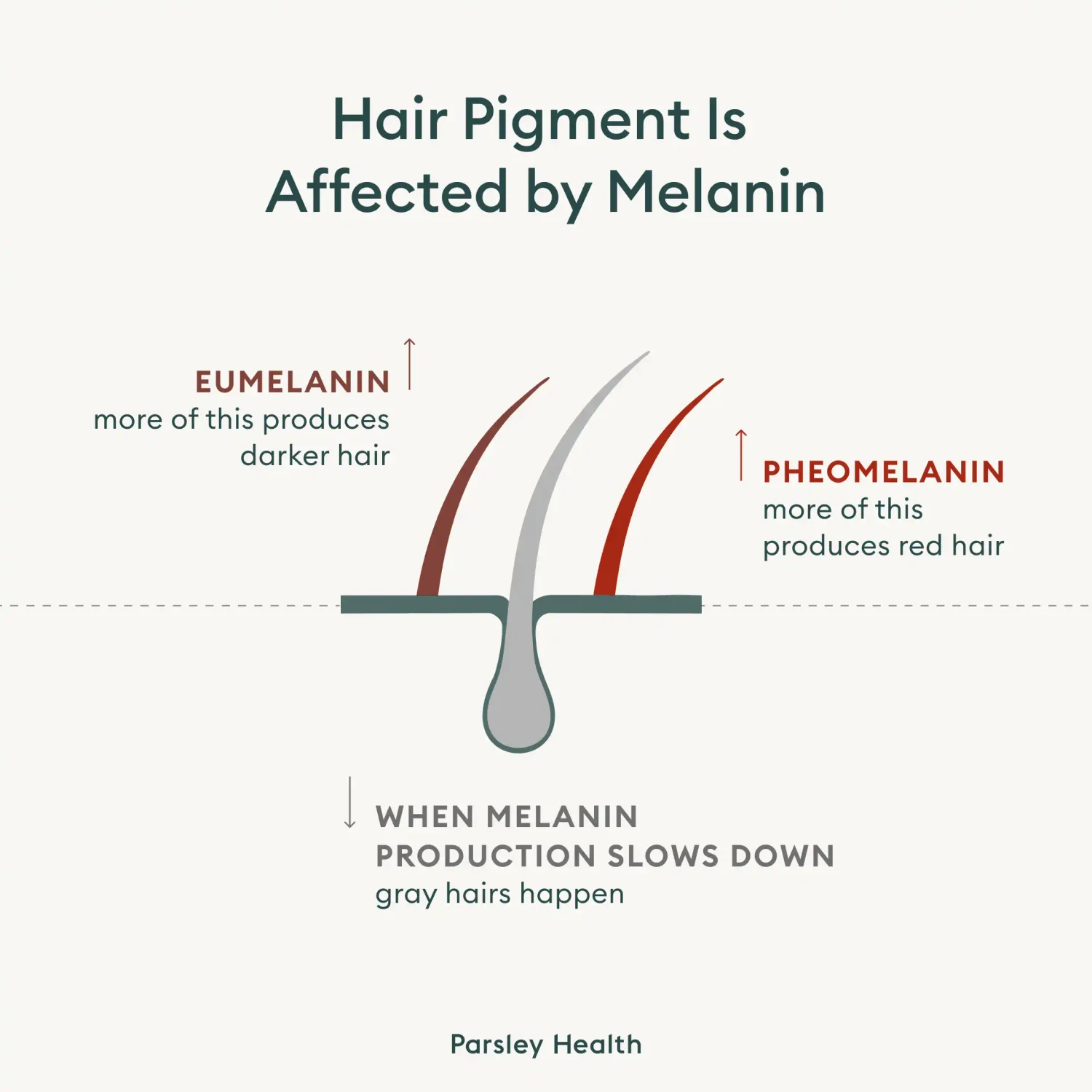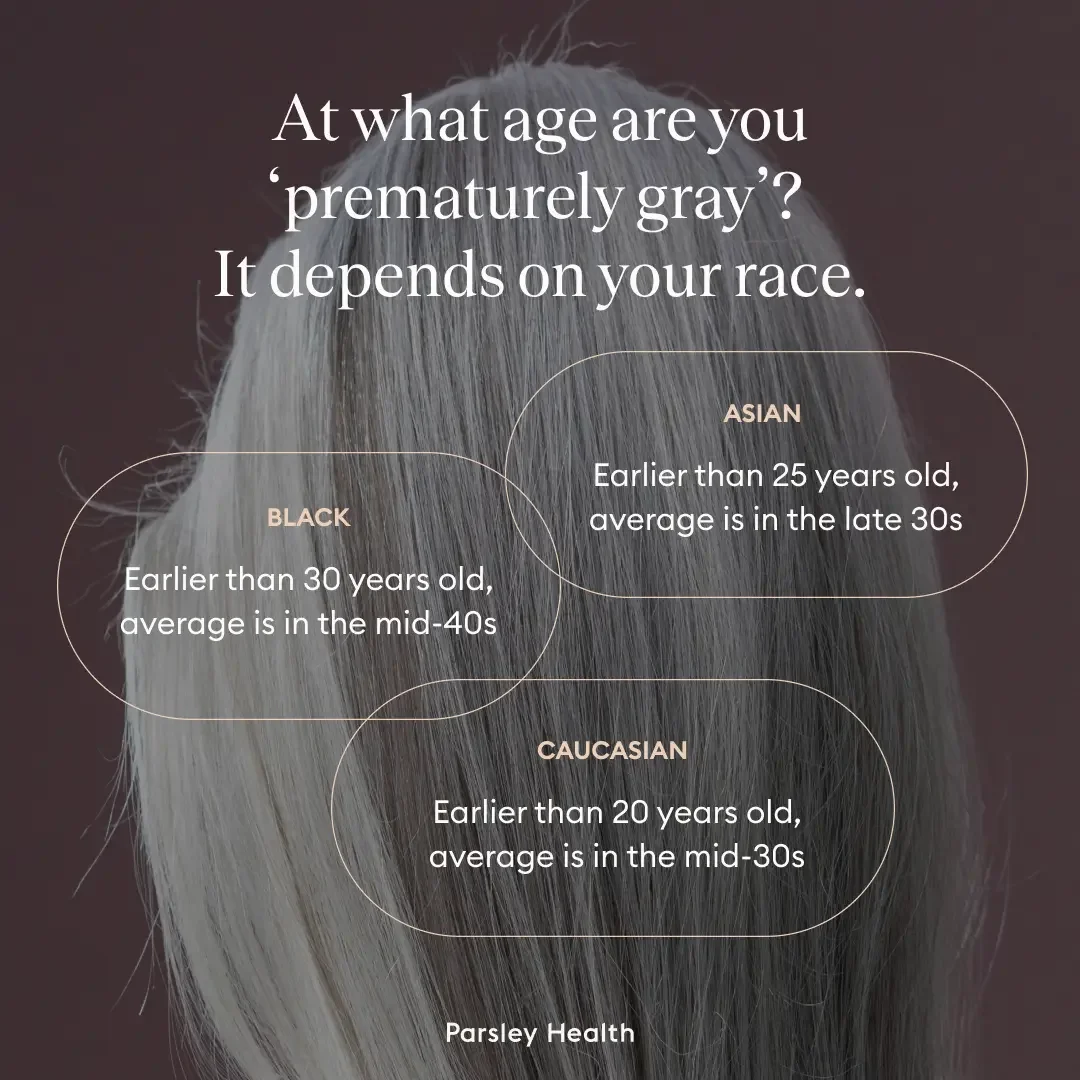What happens when you look in the mirror and you don’t feel like the person staring back at you? For some women with premature white or gray hair, they may be distressed if they look older than they feel. Or, they may be worried that their hair changes indicate a deeper health problem. Hair grays for all sorts of reasons, including genetic factors, hormonal problems, and health conditions. If your color changes are causing you angst, here’s how to get to the root cause and take action.
We know that gray hair is inevitable at some point in our lives. Once you reach age 50, half of us have a head of hair that is at least 50% gray. And while graying is a natural process, finding white or gray strands at a younger-than-you'd-like age can be distressing. Plus, aesthetically, you may want to know if there’s anything you can do to reverse the process.
Premature graying can happen for reasons out of your control (like genetics), but it can also be a sign of a deeper problem. Taking a holistic approach to uncovering root causes of health issues, including white hair at an early age, is key. Doing so helps clinicians, like those at Parsley Health, create integrative solutions.
Learn more about what causes white hair at an early age, plus the holistic approach to restoring your hair’s natural health.
Understanding premature graying
So, why does hair turn white? Although graying might be the most visually obvious sign of hair aging, there are numerous changes to hair that occur as the years go by. With aging, hair changes in:
- Color
- Density
- Diameter
- Growth patterns
- Shape
When it comes to hair color, your hair pigment is affected by melanin production. Cells called melanocytes produce the two types of melanin in hair follicles:
- Eumelanin: More eumelanin produces darker hair.
- Pheomelanin: Produces red hair.
“Gray hair happens when melanin production slows down,” says Marisa Garshick, MD, a dermatologist based in New York City. Aging and genetics are the biggest factors, she says (more on this below), but certain lifestyle factors, nutritional deficiencies, and underlying conditions can speed up the process.
You might start seeing grays pop up in your 30s or 40s, according to the American Academy of Dermatology (AAD). However, due to differing factors—genetics, lifestyle, environment—hair might gray earlier or later than that.
There are plenty of young people with gray hair. Hair is said to have gone “prematurely gray” at different ages depending on race:
- Earlier than 20 years old if you’re caucasian. (Average age to begin graying is in the mid-30s.)
- Earlier than 25 years old if you are Asian. (Average age to gray is one’s late-30s.)
- Earlier than 30 years old if you are Black. (Average age to start graying is mid-40s.)









